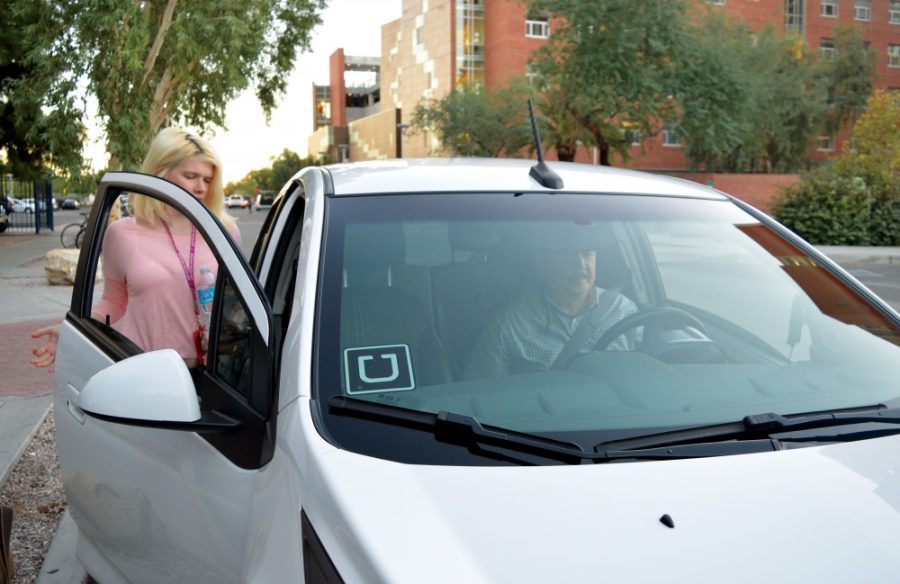The Tucson Police Department continues an ongoing investigation in response to an assault by an individual posing as an Uber driver.
A person leaving the UA campus was assaulted by an individual posing as an Uber driver, prompting last week’s investigation.
According to Officer George Eppley from the University of Arizona Police Department’s Crime Prevention unit, the incident happened when an unidentified person picked up the victim on the UA campus.
The driver was given a destination, and while they headed in the direction of that destination, “something occurred,” Eppley said.
This is the only recent case of an incident like this happening at the UA, according to Eppley, and he said he doesn’t anticipate this a becoming a trend.
However, in order to prevent this from happening again, UAPD sent out a Campus Watch with safety tips for students using Uber, Lyft and other transportation services. These tips range from staying alert at all times to alerting a friend when you are expected to be back.
Uber also has safety tips for its passengers. Kayla Whaling, an Uber spokeswoman, encouraged riders to use the Share my ETA button that is in the app.
The button allows customers to share their estimated time of arrival at a location with someone they know. Whoever the user sends the ETA will receive a link and, from there, will be able to watch the car take the rider to their destination.
“It’s a pretty cool feature where they can actually watch and make sure that you arrive safely,” Whaling said.
One concern that might have contributed to the attack is the verification of drivers from passengers.
Whaling said that Uber encourages riders to verify their drivers’ identities before they get into the car. The app provides the make and model of the driver’s car, as well as the driver’s name and contact information.
Simran Heer, a pre-business freshman who estimated her use of Uber to about 15 times a week, believes this information can be helpful in identifying a driver.
“When you go on Uber, you really look for the car that’s on your Uber app,” Heer said. “You’d have to be really out of it to get in a car that’s not the one on your Uber.”
The drivers are also able to identify the passengers before they get in the car, allowing them to check if they are picking up the right customer.
This kind of two-way identification is echoed in Uber’s rating system. Riders can rate their drivers, while drivers can rate their passengers. This feedback is then monitored by a team, one of which is based in Phoenix.
“They’re available 24/7, so if a rider didn’t feel like their driver met their expectations they can alert us and we can look into the situation,” Whaling said. “No trip with Uber is anonymous. We have the data, we have the trip information and rider and driver information as well.”
In order to become a driver for Uber, a potential driver has to go through a verification and background check process, according to Whaling.
Potential drivers are required to go through a vehicle check and to accept Uber’s terms and conditions before becoming an employed driver.
“Uber is assuring their drivers are brought on-board to provide to the rider that everybody is on the same page, so that the person getting their car should be able to have access to the driver like you would any cab,” Eppley said. “[Drivers] should be providing information on who they are, as indicated in the Campus Watch.”
Eppley said he hopes the tips provided by the Campus Watch help prevent people from getting in a situation similar to the recent incident.
Eppley also said he encourages students to use the LiveSafe app, which allows students more ways to contact the police. Eppley said he believes that, in the case of the recent incident, the LiveSafe app might have been able to help.
“We certainly would have been able to give them some options on what to do,” Eppley said. “It’s a matter of being aware of your own safety and thinking about personal safety.”
Follow Ava Garcia on Twitter









